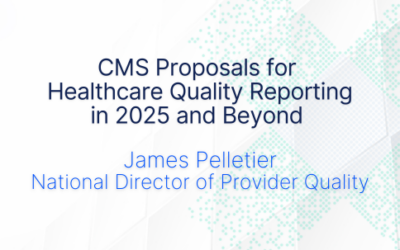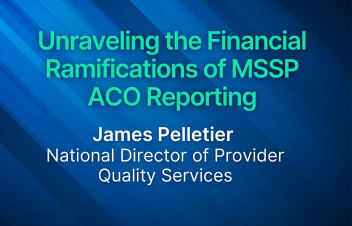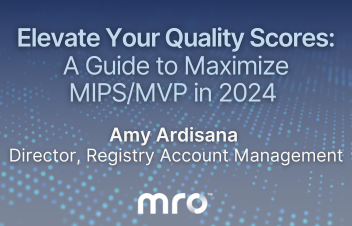EHR Connection vs. QRDA-1: How to Pick the Best Reporting Path
In the realm of healthcare quality reporting, the method of data exchange plays a critical role in the accuracy, efficiency, and cost-effectiveness of the process. That’s why providers need to understand which path is best for them when it comes to partnering with an eCQM / Medicare CQM for direct Electronic Health Record (EHR) connection or using QRDA-1 for data uploads. Let’s delve into the nuances of each method to better understand their implications for healthcare providers and organizations.
Work With a Qualified Registry Partner for Direct EHR Connection:
Data Refresh: One of the significant advantages of a direct EHR connection is the seamless exchange of data at predefined intervals. This ensures that healthcare providers have access to the most current patient information, empowering them to make informed decisions promptly. It also allows them to monitor their performance and compare themselves to peers and other benchmarks.
Data Access: With direct EHR connectivity, your quality performance vendor can navigate through data elements based on unique physician workflows and documentation variations, enhancing the exploration of information within the system. Vendors can re-map data elements from different fields to ensure that providers get the credit they deserve for the quality of care that they provide. This capability facilitates accurate decision-making and compliance with regulations, ultimately contributing to better patient care.
Data Accuracy and Completeness: By integrating directly with the source EHR, providers can ensure data accuracy and completeness, essential for regulatory compliance, risk management, and successful quality performance reporting. Accurate reporting not only safeguards against penalties but also maximizes shared savings and reimbursement.
CQM Measurement: Direct EHR connectivity enables the extraction of Clinical Quality Measures (CQMs) from non-structured data, such as clinical notes, allowing for comprehensive reporting and performance evaluation. This flexibility empowers Accountable Care Organizations (ACOs) to optimize their reporting methods based on individual preferences and performance goals.
Cost: While direct connections may incur minimal annual fees, the benefits in terms of data accuracy and accessibility far outweigh the costs.
Population Health Initiatives: Access to clinical data supports population health initiatives by facilitating informed decision-making, risk stratification, preventative care coordination, and resource allocation. Beyond regulatory requirements, EHR data serves as a cornerstone for driving clinical outcomes and enhancing patient care delivery.
QRDA-1 File or Other “Push” Data Uploads:
File-based Data Exchange: QRDA-1 files offer a standardized approach to quality reporting, mandated by the Cures Act for EHR certification. However, their scope is often limited to specific quality measures, constraining the depth of data analysis.
Data Specificity: QRDA-1 files contain predefined data elements, limiting the granularity of information compared to direct EHR connections. This constraint may impede comprehensive reporting and decision-making processes.
Periodic Reporting: Quarterly generation and transmission of QRDA-1 files introduce delays in data availability, potentially affecting real-time decision-making and responsiveness to quality initiatives.
Structured Data: Mapping structured data to QRDA-1 elements relies on EHR systems, making it challenging to validate data accuracy and completeness without visibility into the entire patient chart. This limitation poses risks to the reliability of quality reporting outcomes.
Cost: The retrieval of QRDA-1 files typically incurs fees from EHR vendors and Medicare Reporting vendors, adding to the overall cost of quality reporting. Additionally, manual efforts may be required for data upload, further complicating the error-prone process and potentially increasing operational expenses.
In conclusion, the choice between a direct EHR connection and QRDA-1 uploads hinges on factors such as data accuracy, timeliness, cost-effectiveness, and an organization’s specific reporting needs. While QRDA-1 files offer a standardized method of data exchange, direct EHR connections provide real-time access to comprehensive patient information, driving informed decision-making and enhancing quality reporting outcomes. As healthcare organizations navigate the evolving landscape of value-based care, selecting the most suitable approach becomes paramount to achieving optimal outcomes for both providers and patients alike.
James Pelletier
National Director of Provider Quality
MRO


